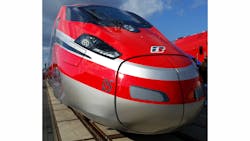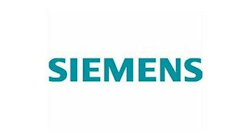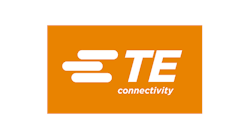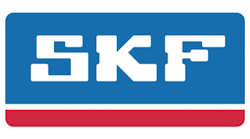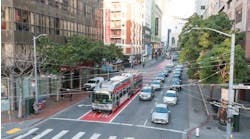Attracting riders. That was what a lot of the new technology featured at InnoTrans was aiming to do. Solutions to keep them connected on the ride, comfortable, safe and informed were seen in everything from signage, fare payment technologies, security systems, train sets and even in the latest fabric trends.
While many of the 140 world premieres are for the European market, especially when it comes to the trains themselves, there are more and more North American exhibitors and premieres. When talking to one exhibitor about the a European focus and the significance of being at InnoTrans, he said it’s not just being here, but more importantly, we can’t afford to not be seen here. Which seemed to sum up the feelings of many that I talked to.
And while a number of the innovations aren’t for the North American market, it’s always amazing to see what technology is out there and how things can be done differently.
Latest Trends and Technologies
Ruth Niffeler, one of four designers with Lantal Textiles, showed off the four new product lineups, reflective of the global trends they see. Blush, she said, is about the emancipation of women and reflects current color trends seen in the cosmetic industry. It’s for the on-and-off of short-distance rides, she said.
Metroplexity is about the megacities, where there is a lot going on in an urban environment and where there is a lot of diversity. “It’s for people going from city to city,” Niffeler said. Opposite of that, Sanctuary is about people in the big city looking for a calm space. It’s monochrome, quiet and relaxing for those long-haul services. Lastly, Framework is the new generation where technology and computers are all around them. It’s all about people traveling to work.
The conceptual forecast they’ve created is for velvet and flat-weave seat covers and are meant to serve as sources of inspiration for fresh ideas for transport providers.
A broad range of options is available by combining different types of weaves and quality grades. Lantal’s 100 percent wool bouclé carpet is a premium natural floorcovering with a dense structure for an extended lifetime and high underfoot comfort. Where luxurious, velvety looks are important, Lanta’s 75 percent wool/25 percent polyamide cut-pile carpet is the ideal choice. This high-quality product creates a comfortable atmosphere in every interior. The pleasant travel experience can be further enhanced with a needlefelt underlay. In addition to the high underfoot comfort, the underlay minimizes footfall noise and protects the carpet against premature wear.
Siemens unveiled three assembled cars for the new Desiro City train for the Thameslink project. The electric multiple units feature an improved interior layout, greater comfort and increased flexibility. The number of seats and the distances between them can be varied according to passenger demands. The new trains are up to 25 percent lighter than the existing Desiro UK fleet. The car bodies are lightweight aluminum construction and the bogies are approximately one-third lighter in weight.
Bossard premiered a SmartLabel for leaner logistics processes. Parts bins have an e-paper display and users can easily order replacements from the site where they are needed. The display shows an image of the product, the order number, the order status and delivery date. The SmartLabel can apply to any standard parts bin enabling existing infrastructure to be used.
TE Connectivity featured its latest application-focused solutions, including a preview of its contactless connectivity solution, smart connectivity. The contactless solution offers more freedom in design for the industry.
Customer Comfort
Sabic introduced several new products that make things look and feel more comfortable during the commute. New anti-graffiti sheets Lexan KH6500 and Lexan KH6200 offer chemical resistance against graffiti and cleaning agents and can be used as a cost-efficient alternative to PVC, polyester, vinyl ester or phenolic fiber-reinforced plastic materials used in interior train applications. Director of Mass Transportation for Sabic’s Innovative Plastics Kim Choate said graffiti can be wiped off with a rag.
Another new material is the Lexan FST3002 resin, a copolymer resin with high-flow capabilities. Choate said it takes weight out, being 30 percent lighter. A good candidate for seating components, he said it also can be injection molded, allowing manufacturers to have increased efficiency in the manufacturing process. They can be made in a matter of hours, as opposed to a labor-intensive thermoset process.
Unlike thermoset materials which cannot be recycled, the injection-molded seats are recyclable at the end of their useful life.
Alcatel-Lucent was highlighting its next generation of communications keeping rail systems operating and secure. Intelligent communication networking often is done on multiple separate networks and it’s hard to manage and upgrade. Keeping mission-critical systems, such as signaling, securely operating is a necessity.
Thierry Sens, marketing director – EMEA with Alcatel-Lucent, showed a demonstration of a live LTE network as a preview of the Telecom System for Future Urban Transport (SYSTUF) demonstration, which will be tested as part of the Grand Paris project. He said Paris will have 36,000 cameras and he showed how with a device one can buy over the Internet for about €100, someone could break in to an insecure network and view what the system is seeing. The solution, he explained, is at the fiber level, to encrypt the light. The operator would see an alarm if someone was to attempt to break into the network, but they wouldn’t be able to access it. The key is changed every minute, automatically.
Alcatel-Lucent in partnership with Alstom Transport also demonstrated technology available today that could create a cloud-connected passenger that would have access to a variety of information, leveraging ultra-broadband connectivity and cloud solutions.
By logging in to a smartphone that connects passengers to their assigned seat, the table computer display is connected to them and their interests. Passengers can check route information, maps of where they are going and the additional transit connections at their destination. They can make restaurant reservations, buy museum tickets, play games to pass the time or get other specials sent to their phone based on their interests.
High Speed Focus
High-speed rail and very high-speed rail are still major focuses and there were new technologies to move trains faster, safer and more efficiently.
SKF featured wheel flange lubrication to reduce friction, self-lubricating bearings and condition monitoring to monitor bearing conditions and track conditions.
The sensor system integrated into the compact tapered roller bearing unit has the ability to detect rotational speed for the wheel slip/slide protection and traction control unit, bearing temperature, direction of movement, and vertical and/or lateral acceleration. SKF’s multilog online System IMx-R monitoring system monitors wheelset bearing conditions and grease service life, wheel flats and shape, bogie stability, derailment condition, propulsion system condition and rail track conditions. It provides automatic load and speed-dependent warnings and alarms that initiate on-board and external communication, data processing for automatic diagnosis and root cause analyses, and other Web-based data access.
Wheel flange lubrication systems reduce friction, a particular problem on curves between the wheel flanges and the inner sides for the rails. Lubrication systems can be onboard the vehicle or can be mounted on the track at curves. The systems reduce friction and help save costs through reducing maintenance and repair requirements.
CSR Corp. showcased its high-speed train with permanent magnet drive and its very-high-speed test train. The traction transmission technology of perpetual magnet motors could increase transmission efficiency by 3 percent at least, leading to energy conservation and environmental protection. The high-speed train also features strong acceleration ability, good controllability and a comfortable ride. Continuous operation speed is 350 km/h with a maximum test speed greater than 385 km/h.
The development of a very-high-speed test train explores the critical values of high-speed train systems under limiting velocity, rolling out perspective, safety and reliability of the system of trains running at 500 km/h. Response performances of key components under strong coupling force are studied to further improve safety redundancy and better guide commercial operation of the trains. Based on the results of the CRH380A high-speed train, the focus has been on aspects of increasing critical speed, improving traction capacity and reducing resistance. The train consist is 6 cars, all motor cars, and equipped with three traction units, each of which includes one traction transformer, two traction converters and 8 traction motors. The maximum traction power can reach 21,120kW during high-speed test.
The V300 Zefiro very-high-speed train, built in partnership between Bombardier Transportation and AnsaldoBreda was on display and can transport up to twice as many passengers as the world’s largest aircraft at speeds of up to 360 km/h. Two years ago there was a full-scale mock-up of Zefiro at InnoTrans and this year there was a crowd of people around the train and standing in line to walk through the train featuring extra wide carbodies, low floors and a stylish interior for rider comfort.
For more information from InnoTrans 2014:
Opening Press Conference and Tour – www.MassTransitmag.com/1200562
Photo Tour of InnoTrans Prep – www.MassTransitmag.com/12004950
Photo Tour of InnoTrans 2014 – www.MassTransitmag.com/12005283
Additional photos from InnoTrans2014 - https://www.flickr.com/photos/93797754@N02/sets/
